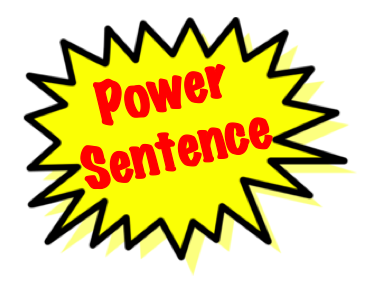Are you fighting the battle of cohesion in your students' writing? Do they seem to lack sentence to sentence and paragraph to paragraph connections.
Perfunctory transitions don't work well because they essentially add nothing to the paper. Yet, we need our students to build connections within their writing.
Power Sentences to the rescue! [Thanks, Richardson ISD!]
A Power Sentence does require a bit of practice, but it's really an easy way to wrap up a paragraph and connect everything back to the thesis. Check out this example from the 2013 STAAR expository scoring guide. I like this example because it's simple and incredibly attainable. This is a score point 3 explaining why it is sometimes necessary to take a chance. This essay has three essential components that make it simple, yet successful.
The thesis statement essentially opens the essay, and while it's not my favorite, it gets the job done. Then, the student uses a specific example about Benjamin Franklin. To wrap up that paragraph and show the connection to the thesis, the student writes a complex sentence that establishes a relationship to the thesis--the POWER SENTENCE.
It's such a simple move, but it truly brings cohesion from the thesis to the specific example. Power Sentences do not have to be complex sentences. However, it is helpful to get your kids to try out different subordinating conjunctions so that they can experiment with different types of connections. This can be especially important for ELLs.
And...as a potential bonus, today I started thinking about the Power Sentence and SAQs. I wonder if teaching students to master a strong Power Sentence could help with that final connection piece in an SAQ. Just a thought, but I'm excited to try it out!



No comments